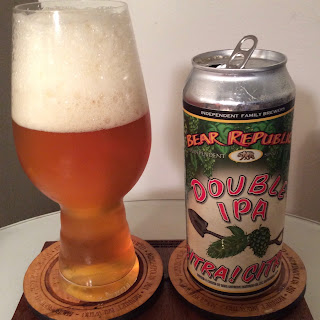Chimay Premiere (Red), or "Rouge"
7 % ABV, 19 IBU, Bieres de Chimay, Belgium.
You know, I most certainly do love the beers of Belgium. I am very enamored of the Trappist styles, and count the Dubbel among my favorite styles of beer of all. This blog has notes on 34 Dubbels, most American interpretations, but a good lot of Belgians, including the Trappists, Westmalle, Achel, La Trappe, etc. But, not this one, nor anything from Chimay.
Someone else noticed this and wondered why, but I can't give a good reason. I tried them all (almost, at least the ones easily found) and wrote about that experience on BeerAdvocate many years ago, but something wasn't right about what I wrote. That's why I vowed to write new reviews for this here blog, once I procured some new bottles. That went the way of all procrastination, until that someone who noticed the lack of Chimay in the Nib visited the retail store where I currently work and bought a bottle and gave it to me. Thank you, August, you are a prince among men. I really meant to get around to it, now I have incentive to do the thing I am doing now, (although, several months later) and after that, take the other two home to review, as well.
Enough palaver, let's open that bottle...
Clear, deep auburn/ burgundy coloring, slim, brief brown head.
In the nose: Sweet malt notes at first, caramel and toffee, cocoa, cola, slight spice.
In the mouth: Arriving on the palate, it's a balanced affair, with caramel and toffee flavors rolling on the tongue. Major malt, minor hops, increasing flavors emerging.
I think that my numbers on dubbels are faulty, in that I am not sorting certain beers as dubbels that I should be. I'll fix that. Looking on BeerAdvocate, this beer is #5 among all dubbels, the first four being Westveleteren 8, Unibroue's Maudite, Westmalle, and Ommegang, a ranking I'd agree with. The bottom half of the Top Ten goes: Rochefort 6, St. Bernardus Prior 8, Achel 8, Ommegang Double Barrel Dubbel, and St. Bernardus Pater 6. I've had them all.
I'm surprised when I go through that list. Brother Thelonious is only #198? Something's fishy here!
To continue with the beer, we're getting some brown sugar, molasses, a touch of cocoa, a never ending sweetness that is adequately balanced.
I'm going to cheat for a minute and consult Michael Jackson's Great Beers of Belgium, which is handily within arm's reach and say that he refers to it's fruity character and offers up: blackcurrant, nutmeg, vanilla? What's with the question mark, Mike, say it or don't say it! Black currant is possible, vanilla, yeah, I get it, and nutmeg? Sure, why not. Not exactly, but this is not wholly imagination, and also never an exact science. No one is really wrong, but some are more right than others. (And Mr. Jackson was probably the rightest among everyone.)
The spicy character is getting broader and wider, and the fruit unfolds. Dark malt flavors make their magic in the mouth, slowly unspooling. The alcohol isn't crazy high, but it is unraveling in a wonderful way. The sweetness gives way, and everything ends on a dry and delicious note.
I'm enjoying this more and more as the bottle and the glass empty. More complexities arise, flavors ripen, taste emerges. Rounds off beautifully on the palate, ending on a graceful, serene note.
This one is quite nice, though it certainly doesn't catapult into the upper echelon of my favorite dubbels. More of an acknowledgement that I was wrong to dismiss it for so many years.
I will not share my notes of disappointment from 2004. I'll probably delete them. This beer didn't deserve my scorn. It may not be the greatest, but it's still pretty good.
First sold in 75 cl (25.4 fl.oz.) bottles, it is noted for its copper color and as the first beer brewed by the monks of Chimay in 1862.
Topped with a creamy head, it gives off a light, fruity apricot aroma produced by the fermentation. The taste perceived in the mouth is a balance confirming the fruity nuances noticed in the fragrance.
Its taste, which imparts a silky sensation to the tongue, is made refreshing by a light touch of bitterness. To the palate, the taster perceives a pleasant astringency which complements the flavor qualities of this beer very harmoniously.
This top-fermented Trappist beer, re fermented in the bottle, is not pasteurized.


















































